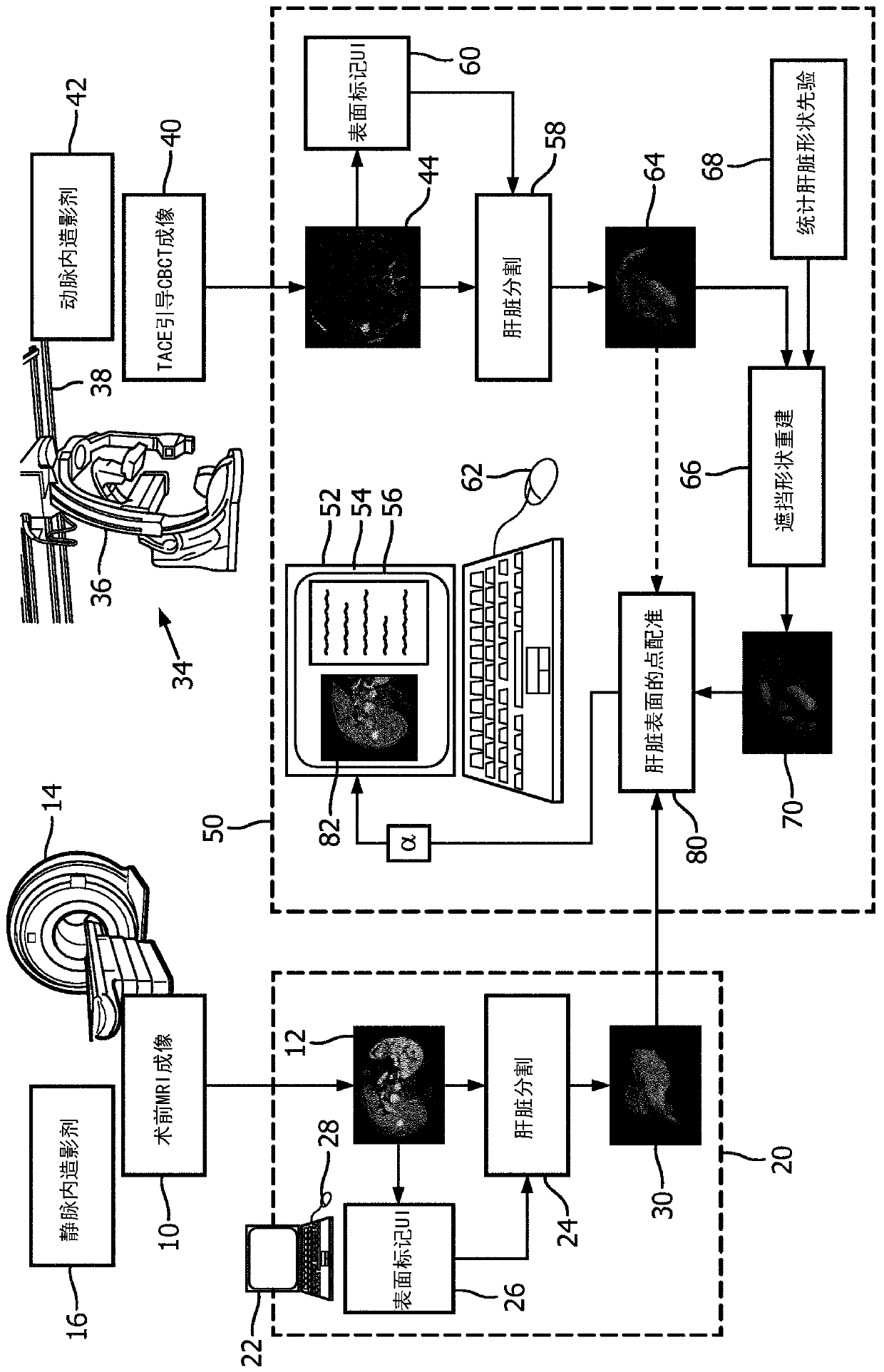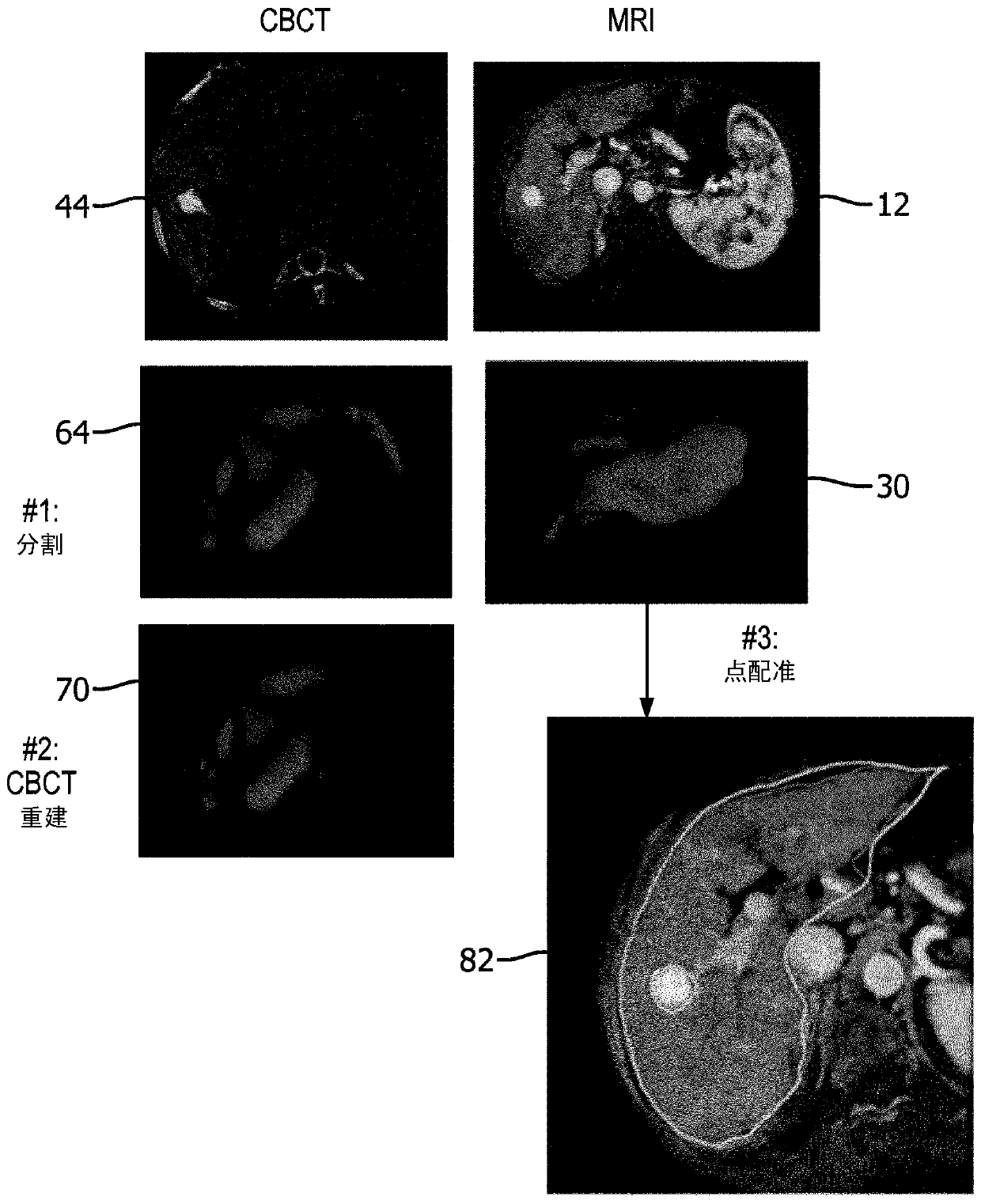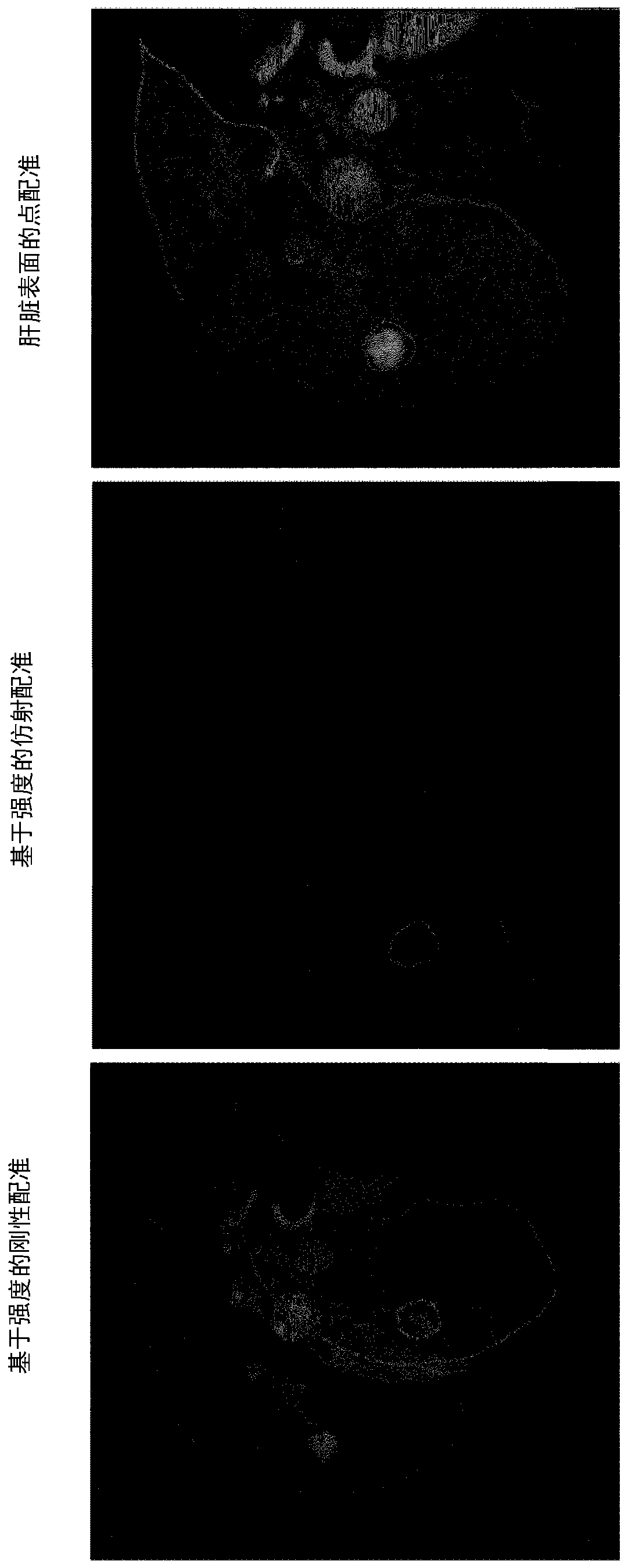Cbct to mr registration via occluded shape reconstruction and robust point matching
A space registration, medical image technology, applied in the direction of detailed information related to the graphical user interface, image analysis, image enhancement, etc., can solve the problem that the surgeon is not provided with help
- Summary
- Abstract
- Description
- Claims
- Application Information
AI Technical Summary
Problems solved by technology
Method used
Image
Examples
Embodiment Construction
[0018] One way to provide intuitive merging of information embodied by cone-beam computed tomography (CBCT)-guided images and reference preoperative medical images (usually MRI images or MDCT images) would be to spatially map the CBCT images with the preoperative medical images. and then display them as fused images, for example with one image displayed on top of the other as a partially transparent overlay image.
[0019] However, in-procedure registration of CBCT images to baseline MRI or MDCT preoperative medical images is a challenging problem for several reasons. One difficulty is that the CBCT field of view (FOV) is typically cylindrical in shape, compared to the common rectangular FOV used for baseline MRI or MDCT preoperative medical images. Another difficulty is that in many cases the liver is completely invisible in the CBCT FOV. Furthermore, CBCT-guided images are often of low quality and prone to artifacts. These are factors such as incomplete imaging arcs (e.g.,...
PUM
 Login to view more
Login to view more Abstract
Description
Claims
Application Information
 Login to view more
Login to view more - R&D Engineer
- R&D Manager
- IP Professional
- Industry Leading Data Capabilities
- Powerful AI technology
- Patent DNA Extraction
Browse by: Latest US Patents, China's latest patents, Technical Efficacy Thesaurus, Application Domain, Technology Topic.
© 2024 PatSnap. All rights reserved.Legal|Privacy policy|Modern Slavery Act Transparency Statement|Sitemap



